In the world of nutrition, there’s a tiny powerhouse that often goes unnoticed – beans. These unassuming legumes, packed with immense health benefits, have earned their place as superfoods. From boosting heart health to aiding digestion, beans offer a myriad of advantages that make them an essential addition to any balanced diet.
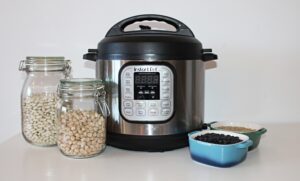
Health Benefits of Beans
Heart Health: Beans are rich in soluble fiber, which helps lower cholesterol levels. Reduced cholesterol levels contribute to a healthier cardiovascular system, lowering the risk of heart diseases, including heart attacks and strokes.
Digestive Health: The high fiber content in legumes aids digestion and promotes regular bowel movements. Fiber prevents constipation, supports healthy gut microbiota, and reduces the risk of digestive disorders, such as diverticulosis and irritable bowel syndrome (IBS).
Weight Management: Beans are naturally low in fat, and high in fiber and protein, making them highly satiating. Including them in your meals can help you feel full for longer periods, reducing overall calorie intake and supporting weight management and weight loss goals.
Blood Sugar Regulation: The low glycemic index of legumes ensures a slow and steady release of glucose into the bloodstream, preventing rapid spikes in blood sugar levels. This quality is particularly beneficial for individuals with diabetes, helping to manage blood sugar levels effectively.
Rich Source of Plant-Based Protein: This makes them a valuable protein alternative for vegetarians and vegans. Protein is essential for building and repairing tissues, supporting muscle health, and promoting overall body strength.
Antioxidant Properties: Such as flavonoids and polyphenols, which neutralize harmful free radicals in the body. Antioxidants protect cells from damage, reduce inflammation, and lower the risk of chronic diseases, including cancer and cardiovascular disorders.
Bone Health: Legumes are a good source of minerals like calcium and magnesium, which are crucial for bone health. Adequate intake of these minerals helps in maintaining strong and healthy bones, reducing the risk of osteoporosis and fractures.
Improved Energy Levels: The complex carbohydrates in legumes provide a steady release of energy, preventing energy crashes and fatigue.
Reduced Cancer Risk: Certain compounds found in beans, including phytonutrients and fiber, have been linked to a reduced risk of certain types of cancer, such as colorectal cancer. These compounds help promote a healthy digestive system and prevent the formation of cancerous cells.
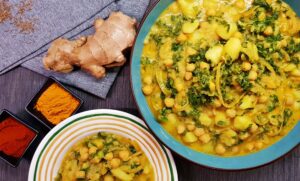
Understanding Bean Sensitivity
This sensitivity is often due to the presence of complex carbohydrates called oligosaccharides, which can be challenging to digest for certain people. Here’s a breakdown to help readers understand bean sensitivity:
Oligosaccharides and Digestive Discomfort: What are Oligosaccharides? Oligosaccharides are complex carbohydrates found in beans. They can cause gas, bloating, and discomfort in some individuals, especially those with sensitive digestive systems.
Digestive Enzymes: Some people lack specific digestive enzymes needed to break down oligosaccharides efficiently, leading to discomfort.
Individual Differences: Bean sensitivity varies from person to person. Some individuals can digest them without any problems, while others may experience discomfort even in small amounts.
Tolerance Levels: Some people can tolerate certain beans better than others. It’s crucial to pay attention to how your body reacts to different types of legumes.
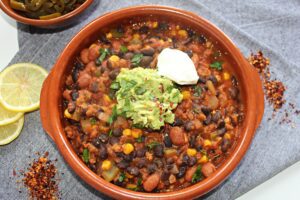
Ways to Reduce Discomfort
Gradual Introduction: Introduce beans gradually into your diet, beginning with smaller portions. Allow your digestive system time to adjust to the increased fiber content.
Soaking: Soak dried beans overnight to reduce oligosaccharides, the compounds responsible for gas and bloating. Discard the soaking water and rinse the beans thoroughly before cooking. If using canned beans, rinse them under cold water before consuming. This removes excess sodium and oligosaccharides.
Cooking Techniques: Using a pressure cooker can further reduce oligosaccharide content and cooking time. It’s an efficient method to make beans more digestible.
Mindful Eating: Chew your food thoroughly, including beans, to aid in the digestion process. Proper chewing breaks down food into smaller particles, making it easier for your digestive system to handle.
Consult a Healthcare Professional: If discomfort persists, consult a registered dietitian or nutritionist. They can provide personalized dietary advice and help create a meal plan that suits your digestive needs.
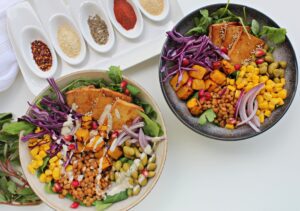
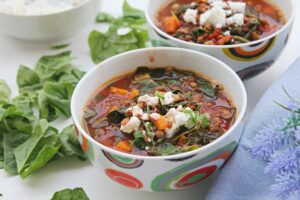
Combining Beans with Digestive-Friendly Foods
Here are some suggestions on how to pair beans with other foods that promote better digestion:
- Brown Rice/Quinoa: Brown rice complements beans well and provides additional fiber for digestion. The combination of beans and brown rice forms a complete protein source.
- Pineapple: Pineapple contains bromelain, a digestive enzyme that helps break down proteins. Fresh pineapple chunks or pineapple salsa can enhance the digestion of bean dishes.
- Sweet Potatoes/Sweet Potatoes: Gentle on the stomach and easy to digest. Provide a natural sweetness that balances the flavors.
- Ginger: Ginger has anti-inflammatory properties and can help soothe the digestive system. Add grated or minced ginger to bean-based soups, stews, or stir-fries.
- Cumin: Cumin aids digestion and adds a warm, earthy flavor.
- Kale: Kale is high in fiber and antioxidants. Incorporate kale into salads or soups along with beans for a nutritious and digestible meal.
- Yogurt: Yogurt contains probiotics that support gut health.
- Sauerkraut: Fermented foods like sauerkraut provide beneficial bacteria for the gut.
- Avocado: Avocado is rich in healthy fats and adds a creamy texture to bean salads or wraps. It’s gentle on the stomach and enhances the overall taste of the dish.
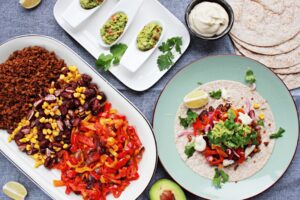
Personal Tip: Batch Cooking Beans for Convenience
One of my favorite kitchen hacks for incorporating beans into my diet is batch cooking and freezing. It not only saves time but also ensures that I always have nutritious beans readily available. Here’s how I do it:
Step 1: Soaking and Cooking Start by soaking a large quantity of your favorite beans overnight. The soaking process helps reduce cooking time and aids in digestion. Once soaked, cook the beans in a large pot until they are tender. You can add a bay leaf or garlic cloves for extra flavor.
Step 2: Portioning and Freezing After the beans are cooked to perfection, allow them to cool completely. Then, portion them into freezer-safe containers or zip-top bags. I usually measure out portions suitable for one or two meals. Be sure to leave some space at the top of the container or bag to allow for expansion as the beans freeze.
Step 3: Label and Freeze Label each container or bag with the type of beans and the date of preparation. This helps you keep track of freshness. Place the containers or bags in the freezer. Frozen beans can stay fresh for several months, allowing you to enjoy them at your convenience.
Step 4: Easy Meal Preparation Whenever I need beans for a recipe, I simply take out a container from the freezer. There’s no need to worry about soaking and cooking them from scratch every time I want to add them to soups, salads, or other dishes. It’s a real time-saver on busy days!
Tip: You can also freeze different types of legumes separately or create convenient bean mixes tailored to your favorite recipes.
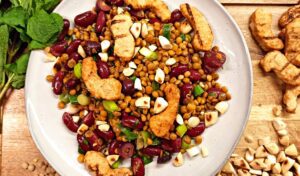
Incorporating Beans into Your Diet
Salads:
Black-eye Bean Salad for Easy Lunch
Beetroot Salad Recipe-Healthy & Delicious
Soups and Stews:
Hearty Italian Minestrone Soup Recipe
A Taste of Ukraine: The Authentic Borsch Recipe
Lima Bean Soup with Brown Rice
Split Pea Soup with Goat Cheese
Classic Greek Boiled Beans Recipe – A Nutritious Mediterranean Dish
Protein-Packed Instant Pot Turkey Chili
Wraps and Tacos:
Wrap Recipe with Beans & Bell Peppers
Dips and Spreads:
Sun-Dried Tomato Hummus Recipe
The Best Classic Hummus Recipe: Creamy, Healthy & Easy to Make
Baked Goods:

Happy Cooking!





